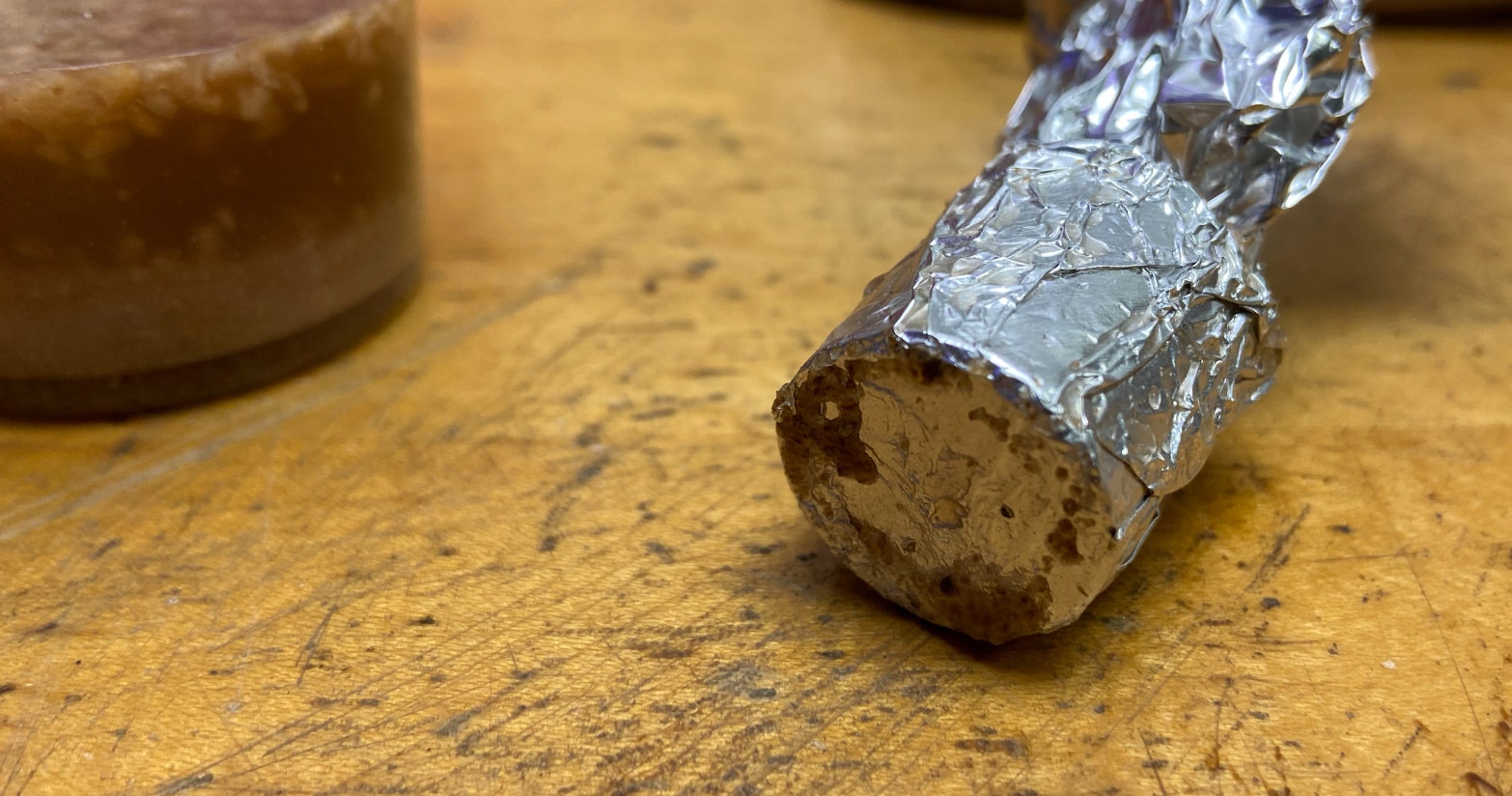So, how do you make it happen? Simple: You use another magnet. Putting a strong magnet near those unaligned domains will force them to line up. It’s actually possible to find rocks in the ground that are both ferromagnetic and have their domains aligned. We call these lodestones. They may have been magnetized by the strong magnetic fields created during a lightning strike.
Do Magnets Interact with All Metals?
If you grab a bunch of metal stuff around your house, most of it is probably steel (an alloy made from iron) or aluminum, copper, or brass. Oh, and your cast iron pot is of course made of iron. Of these, only the iron and some of the steel is attracted to magnets.
Video: Rhett Allain
It’s important to remember that magnets only interact with ferromagnetic materials. If you were indeed a magnetic human, only a steel or iron spoon would stick to your head. Silver ones wouldn’t work.
Do the Covid Vaccines Contain Metals?
One of the arguments the people in these spoon videos are making is that Covid-19 vaccines have metal in them. In the Center for Disease Control and Prevention’s list of ingredients for the three Covid vaccines given emergency use authorization in the United States, the agency specifically points out: “All COVID-19 vaccines are free from metals such as iron, nickel, cobalt, lithium, rare earth alloys or any manufactured products such as microelectronics, electrodes, carbon nanotubes, or nanowire semiconductors.”
But the list does show that all three contain some form of sodium, including sodium chloride or sodium acetate, and one of them contains potassium chloride. Both potassium and sodium can be metals—does that mean there’s some kind of metal in there after all?
No, writes Naomi Ginsberg, an associate professor of chemistry and physics at UC Berkeley. “Potassium and Sodium are only metallic in solid form, but they are not solid as additives in the injected solution,” she told WIRED in an email. “The individual ions are dispersed in the solution, a liquid composed of mostly water and sparse, individual potassium and sodium ions, in addition to the active components of the vaccine. The ions in this solution are basically like dissolved salts, like are in Gatorade or Pedialyte, which our body needs to work properly but which get depleted during exercise.”
And, of course, neither potassium nor sodium is ferromagnetic. They couldn’t cause a magnetic interaction with normal objects.
So Then How Did They Do It?
Don’t those videos of someone with a spoon on their head prove that they are magnetic? No, they don’t. You can get an object—metal or not—to stick to human skin just because our sweat makes us a little sticky. (Some of us are stickier than others.) An object with a large, flat surface that has a greater contact area with the skin will be more likely to stay stuck. But no magnets are involved.
Are You Sure This Won’t Work?
OK, let’s take iron. It’s a ferromagnetic material that many people put in their body every day through fortified breakfast cereals. Yes, there’s actually iron in most of them, and to prove it, here is a classic at-home science experiment that you can try. Get your favorite cereal and grind it up. Put it in a cup with some water. Then put a magnet in. The magnet will attract the bits of iron in the cereal and you can pull them out. If you have a super strong magnet, it will work much better.
Here’s the iron I was able to harvest from some type of cocoa cereal that I found in my house. (I put aluminum foil over the magnet so I could easily remove the iron afterwards.)
Photograph: Rhett Allain
So, there’s your metal. It’s good for you. Also, no matter how much cereal you eat, it doesn’t make you magnetic.
More Great WIRED Stories



